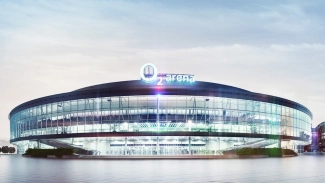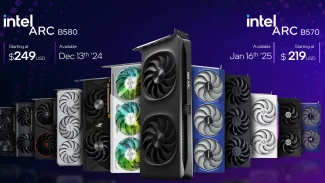Názory k článku Nové verze aplikací: Mapy umí navigovat, Počasí nabídne dynamické mapy
-
del42sa (neregistrovaný)
No VIA to je smutný příběh. Kdysi legendární základní desky s čipsety VIA pro Athlony CPU a Intel Pentium CPU a dnes už hluboká minulost. Dále postupná pomalá smrt S3 graphic divize, která kdysi vyráběla karty, které konkurovaly i GeForce GT6600 a běžely i v duální konfiguraci (Multichrome) bohužel s mizerným driver supportem ale za vynikající cenu (u nás prakticky nesehnatelné), posléze neschopnost včas a bez velkého zpožďování uvádět na trh papírově ohlašované nové produkty (velká bolístka VIA, která se táhne už léta letoucí), velmi zajímavý hardware do malých počítačů a velmi slušné procesory NANO, bohužel za přemrštěné ceny. Všechny ty minipočítače by dávaly větší smysl, kdyby stály polovinu. Naprosto mizerná dostupnost v Evropě a když tak za ceny které prostě trh neakceptuje a koupí si je jedině nějaký zarytý fanoušek jako Tralalák (promiň Tralaláku ale je to tak). Proto je taky Intel úplně převálcoval s ATOMEM a EE Netbooky a následně AMD s Bobcatem. Já osobně VIA fandím, ale přístup jejich manažerů, neschopnost prosadit na trhu vlastní produkty a udělat solidní marketing dostal VIA dnes právě tam kde je.....
Jediná oblast kde je VIA relativně úspěšná je SOHO segment a různá industriální zařízení zaměřená hlavně na security či monitoring. Další oblast VIA jsou různé řadiče a motherboard ad-on čipy, které VIA dodává výrobcům desek.
Ohledně x86 licence nevím v jakém stavu to v současné době je, ale VIA je tak minoritním hráčem na trhu, že to může být Intelu skoro jedno a klidně jim tu licenci prodlouží....
-
Jan Olšan (neregistrovaný)
Procesory se vyvíjí dlouho dobu. Takže ono čtyřjádro klidně může být posledním kouskem, který se dostane na trh, i kdyby třeba rozhodnutí ten provoz zaříznout padlo už třeba před rokem. /Tím myslím, že je to možné, ne že by tomu něco přímo nasvědčovalo - prostě spekulace./
Ale samozřejmě bych si to nepřál. Firem, co dělají SoCy s licenčním Cortexem jsou i tak mraky.
-
del42sa (neregistrovaný)
rozhovor s VIA:
"BT: What do you see the next five years bringing?
VIA: We’re agnostic – both platforms [x86 and ARM] have their place in the market. Now if you look at Intel obviously they will say that x86 is the best for everything, but I think the reality is that the answer is no – there are certain areas such as smartphones that x86 cannot reach right now, but if we project it out and see manufacturing nodes get better there’s better potential for the architecture in such devices. We will still drive x86 as a core part of our business - cloud computing, digital home - the PC, notebook etc, and then a lot of attached devices are based around ARM. Our strategy is to offer both, depending on what the market needs from each product."http://www.bit-tech.net/hardware/2010/08/10/what-happened-to-via/1
-
del42sa (neregistrovaný)
Under the terms, Via has been granted a 10-year cross-license to the relevant parts of Intel's patent portfolio, which will let it make so-called x86 compatible chipsets and processors for the notebook and desktop market. That is, Via can make chips that will run Windows or Linux software or both and largely function like today's Pentium or Athlon chips.
Although functionally similar, Via's products ultimately must bear an original design. The company's chipsets must use an independently developed bus--the data path that connects the processor to main memory--and feature an independently developed pin structure, the array of tiny wires that lets a chip plug into a motherboard. The buses and pin structures can't be compatible with Intel products.
These two requirements will ultimately guarantee that Via's processors will work only with Via's chipsets and vice versa.Via chipsets that conform to the settlement will not work with Intel processors, once a large market for Via. These terms are actually similar to the terms of the Intel-Advanced Micro Devices settlement that allowed AMD to manufacture the Athlon processor. The Athlon runs the same software as the Pentium, but has a completely different bus.
The settlement, though, phases in over time. For the first three years, Intel has agreed not to sue Via for making processors that come with buses and pin structures that are similar to Intel's products. Similarly, Intel has granted Via a license to make chipsets that are pin- and bus-compatible with Intel products for four years, and has agreed not to sue Via or its customers for using pin- and bus-compatible chipsets for another year beyond that.
http://news.cnet.com/2100-1006-995845.html
It’s well known that Intel’s x86 cross-licensing agreements with AMD and Via place strict requirements on what these companies can do while still maintaining their x86 licenses, largely to keep these companies from selling off their license or sub-licensing other companies to design x86 CPUs. Or to put this another way, Intel’s x86 license agreement is designed to keep AMD and Via as the only other x86 CPU designers and to prevent anyone else from becoming an x86 CPU designer by buying the license or the company.
The FTC has not gone so far as to require that Intel drops these provisions, but it does weaken them. If either AMD or Via has a “change of control” (i.e. a buyout/takeover/merger/joint-venture), Intel cannot immediately take the resulting company to court to terminate the license. Intel is required to enter in to good-faith negotiations with the new company to continue x86 CPU design and can only begin court proceedings after a certain period of time. As far as we can tell this does not require that Intel extend a license to a buyer of AMD or Via, but it does require that they consider it. If Intel does not act in good-faith in these negotiations, then the FTC can sanction Intel over it.
The big question of course is whether this will lead anywhere. x86 CPU development is a uniquely expensive and time-consuming endeavor – just because AMD or Via could work with another company doesn’t mean there’s anyone else out there that wants to. NVIDIA has long been considered a candidate for entering the x86 market, but as far as we can tell these terms are to protect the x86 market as a whole, and are not just there to allow NVIDIA to enter the market.
The final requirement of the settlement specifically pertains to Via. Via’s x86 license was scheduled to lapse in 2013 – Intel is required to offer a 5 year extension to Via. Note that this doesn’t compel Via to take the extension or under what terms Intel must offer it, but ultimately Via must be given the option to extend their x86 license to 2018.
http://www.anandtech.com/show/3839/intel-settles-with-the-ftc/2





























